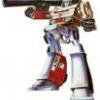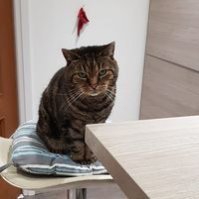Search the Community
Showing results for tags 'Resin'.
-
With the mail dragging its feet I felt like something quick to build while waiting, and luckily I had this in the stash. I doubt I would have ever even thought about buying two if it was only one to the pack, but since it wasn't I didn't exactly get much choice. But now that I have them I may as well build both, one in everyday puttering about mode and the other one stripped down and buttoned up for stealth. As for the specific ships K31 HMS Visby has a bit more potentially going on, so that'll be the "bells and whistles one", and for the sneaky one I'll go with K32 HMS Härnösand, large because that completes the pair that I happened to stumble on while out for a walk downtown back in '18.
- 7 replies
-
- 13
-

-
- 1/700
- Orange Hobby
-
(and 1 more)
Tagged with:
-
My first build for this GB is going to be the Magna 1/72nd scale Martin-Baker MB3 Fighter. The small Martin-Baker company had created some impression with their striking MB2 fighter, which although not selected for production had impressed those who tested it by its simplicity and how easy it was to maintain. When possible Spitfire Hurricane successors were being considered Specification F18/39 was issued to Martin-Baker for a new design that built on the experience of the MB2 but was to be more powerful. This was to be the MB3, originally to be powered by the Rolls-Royce Griffon, but this was changed to the Napier Sabre when it became obvious that the Griffon was not going to be available, although it is not entirely clear who instigated the change (Bill Gunston in an article in Wings of Fame states it was MAP, but Tony Buttler comments that it is currently impossible to know) Construction of the first MB3, and only completed airframe, was slow owing to the small size of the firm and full order books and delays in delivery of components from outside companies. Eventually MB3 R2492 was completed and first flew on 31st August 1942. Its life was brief, crashing on 12th September 1942 in attempting a landing after engine failure and claiming the life of its pilot, Valentine Baker. The partly completed second prototype was rebuilt as the sole MB5, an outstanding aircraft, but at the time of first flight in May 1944, it had no chance of production with the Hawker Fury in view and the first jet fighters already flying. The kit is a typical Magna product in cream resin with a chunky look to them but reasonable surface detail. There are a few air bubbles on the wings near the undercarriage bays. Most parts are attached to resin pour stubs that will need removing The parts count is low and a resin airframe is supplemented by white metal details such as propeller blades and undercarriage legs. These are going to require a lot of cleaning up as most are well-endowed with flash and some pitting on the surface of the propeller blades The resin parts have no locating points and so will need some brass rod to help keep the wings and tail in place. The canopies are vacforms. Four are provided, two with a fuselage spine and two bubble canopies that were schemed but were apparently never fitted, the photo showing the MB3 with a bubble canopy being a 1940s equivalent of photoshopping. One irritating aspect of the kit is that the propeller spinner has holes for four blades, whereas quite clearly the MB3 was fitted with a three bladed propeller. Decals for the yellow P in a circle are present, but no other decals. The First job will be removal and cleaning up with adequate protection against resin dust.
-
Unusually for me I planned my years intended builds by looking at the Britmodeller group builds for the 2021 and worked out which ones I wanted to join. So here is my second non injection GB entry - a F-RSIN resin kit of the lovely post war Languedoc airliner in Air France colours. My plan hopefully coming together later in the year with another 144 airliner for the French Fancy GB, again in Air France colours. So here we have it - simple looking kit with minimal number of parts Box and decals Fuselage and winds - two pieces - bonus! # And lastly white metal props, brass tube undercarriage and resin tail plane. The fuselage and wings are fine smooth resin and hopefully I will add some subtle panel lines to add interest. Done no real research yet but hoping to put this recently acquired kit together quickly and test out the new airbrush on the all important paint scheme - all silver, so preparation is everything! Cheers JP
-
Edging onto the starting grid is this https://www.scalemates.com/kits/ma-scale-85-ferrari-712-m-1010--1072520 And now you know as much as me!! No, that's not right, because I know what it looks like And now you know as much as me! Quite possibly more, though I have heard of Andretti. I got this because it was bundled in with the Porsche 910 that I built for the 10th Anniversary GB. As such I didn't necessarily want it, and when I looked inside the box I wasn't sure I wanted to build it.. Largely because of what's not in the box, namely any instructions. Anyhow, now's the time and I think I can figure out where most of it goes. There again if anyone has got a copy of the instructions I'd be thrilled. Plenty of shiny red coming up and not on a fire engine
- 28 replies
-
- 8
-

-
- 1:43
- White Metal
-
(and 1 more)
Tagged with:
-
Hi Chaps (and Lady as I see Heather is in this GB already) Plenty of scope for me here in this GB but I have decided to build the Unicraft Resin kit of a Fletcher FU-24 which I originally planned for the NZ Group build before defering after Andy Scotts untimely death in September. The kit I planned for this might make an appearance later in the 'Unarmed GB". This model combines 2 equally rare things, a New Zealand made kit and a New Zealand made plane. After WW11 top dressing land with fertiliser was big in New Zealand and huge numbers of war surplus Tiger Moths were used for the task with hoppers of Super Phosphate fitted into the front cockpit. As the Moths began to expire in the early 1950's, an alternative was needed. In typical Kiwi spirit, a group of farmers decided to build their own plane for the task and this was the result. Some were built in the US and assembled in NZ but most of the 300 eventually built were made in NZ. Some are still flying today 40 Years later. The kit was definately not mastered by Wing Nut Wings. The box contains a warning about the brittle nature of the resin. Why a better resin was not used is unknown to me but this is very brittle and trying to cut parts from the casting blocks just caused it to shatter and crumble. The massive rear overhang suggest a lot of nose weight will be necessary while the tiny nose suggests opportunity will be limited. The poorly cast fine resin undercarriage similarly suggests it will not be able to take the load of the base kit never mind the necessary nose weight. If you can see in the pictures, the propeller, seats and one undercarriage leg had already snapped before I recieved the box so it might have to be built with wheels up. Oh dear fixed undercarriage, looks like I need plan C! The kit is by Unicraft whom I have never heard of before. There are 9 main components which will get used. 2 wheels which might get used, and a few bits which will make handy templates but wont get used. There are no decals but lots of colourful options to build and paint. I am in fear of dropping it in case it shatters so this will be a challenging build. Colin
-
One of my builds will be this resin Grob 120 originally released by Dujin several years ago and available again now from FSC Dujin. As usual with resin kits, not too many parts, two vacform canopies (fairly clear but will need tinting) and etched brass. The instructions are all in French but apart from working out what the etched brass parts are for I don't think that will be a problem. The major parts are quite nicely cast but the seats, undercarriage and prop are rough so some work/replacements needed there. Whilst the kit scheme is attractive, my plan is to add a few scratchbuilt parts to turn this into the later turboprop version as used by QinetiQ/ETPS. It needs a new engine cowling, exhaust pipes, five bladed prop, winglets and larger dorsal/ventral fins. I've already got the basic shape for the prop and made vacform moulds for the upper and lower cowling. Also drawn and printed the decals, the lower ones are for the white parts - white ink on white paper doesn't photograph very well...... This is what I want to end up with (my photo from Fairford 2018); Steve
-
Hi all. My entry will be this Accurate Armour, Hotspur Armoured Land Rover. A resin kit with a good smattering of PE. I've always known that the RUC use armoured Land Rovers to police Northern Ireland, but I hadn't really appreciated that there have been various iterations, with each new design providing enhanced protection. The Hotspur version saw service in the 1980s and incorporated additional armour plate fitted within the cabin (in order to maintain the civilian appearance as far as possible). EDIT: Please ignore all that follows - I'll now be building this as an RUC vehicle Their retirement from service corresponded with the start of the 1990s Yugoslav Wars, and one retired vehicle at least was purchased to provide protective transport for the ITN news crew that was covering the conflict in Bosnia. Accurate Armour provide decals for this version (but unfortunately not much infomation on how to use them). I'm still trying to find online images of the ITN vehicle and the only thing I've found so far is a fleeting glimpse of it on its side in a ditch in this YouTube video on similar BBC vehicles. It appears at 40 seconds and you may be surprised by the choice of colour.... Cheers
-
This is my Grumman GB year, so I'll build Attack Squadron's 1/48 F2F-1. The F2F was Grumman's second aircraft, after their FF-1. It first flew in 1933, serving in USN and USMC squadrons from 1935 through 1939, when they were replaced by the F3F. The F2F were then relegated to training; the last was stricken in 1943. The F2F inherited its manually cranked retractable landing gear from the FF-1; it was subsequently used in the F3F and F4F. Attack Squadron had outstanding resin kits.They became Arma Hobby and then went to the Injected Side. Some of their subjects, like their wonderful 1/48 RQ-7B and MQ-8B, are now produced by Brengun. And here are the starting pix. Resin, PE, and a vac canopy. Markings are included for USN squadrons VF-2, VF-3B, VF-5, VF-7, as well as USMC squadrons VF-4M and VMF-2. The cockpit looks nearly ready to prime I'm happy the MLG have metal reinforcement The upper wing will be aligned I hope I remember to properly orient the stick PE looks good.
- 36 replies
-
- 9
-

-
Having decided to build an Airfix Mosquito Nf.II over on the 'Interceptors' GB I thought why not build another which has almost a similar scheme, this being a conversion of a Tamiya B.Mk.IV into a B.Mk.XVI. The Airfix kit went together Ok, I added a bit of interior using some bits from an Airfix Wellington I recently did. I had a Pavla Vac-formed canopy which was a lot clearer than the thick Airfix one. The framing was done using painted Tamiya tape. I used .009" thou guitar string for the receiver aerials. The decals are by Delta Decals, printed by Tally Ho! They were very thin and opaque but went on well onto the 'Klear' gloss coat using the Mocro Set/Sol solutions, or so I thought. After doing the Matt coat the codes and serials silvered badly I ended up painting over it after rescuing them failed, the serials are hardly readable still! The Tamiya kit is the first aircraft of this manufacturer I think I have ever built, having made lots of their 1/35th scale vehicles back in the 70's! It was superb to put together as all Tamiya kits are. For the conversion I had put together 'Brengun' resin Two-stage Merlin's, Blackbird models Bulged Bomb-bay and 100 Gallon tanks and their decals for a 109 Sqn B.Mk.XVI. Of course Airfix had to announce their new kit last month so I decided to get on and get it done! The new nascelles fitted very well, just don't cut the kit parts on the panel line as stated in the 'Brengun' instructions as you'll have a gap, as I found out! The bomb-bay didn't fit that well and needed a bit of filing of the part and the fuselage, I think it looks just a bit too bulged maybe? The tanks fitted well without much trouble.The decals went on superbly, being thin and adhered well. I know the canopy isn't correct, I tried to fashion some of the 'blown' type side windows but it didn't work very well. Hopefully Airfix have the correct side windows, unlike in their CAD drawings! Comments and criticism welcome. Davey.
- 26 replies
-
- 41
-

-

-
Hi everyone, I am about to start the kitty hawk su-30sm which came with these resin exhausts. I need advice on how to remove the flash without damaging the part as I have no idea how to. Thanks
- 2 replies
-
- Resin
- Exhaust Nozzles
-
(and 1 more)
Tagged with:
-
Another resin model on a stand.I only added the pilot figure in the cockpit.Did the nose light form transparent sprue and made a gunsight.I used paints from tamiya and MM.
-
Hello to all.Here is my 1:72 Aircast resin Soko g-2 galeb.This has got to be one of the best resin kits I have ever worked on.it fits really well and the resin is quite soft and easy to sand and glue.I added some spare fujimi pilot figures in the cockpit and made the nose light from transparent sprue.The paints used are tamiya and MM.The decals came from the box, some are balkan models and some are home made.
- 12 replies
-
- 27
-

-
Hi mates, 2020 has been a weird year. I've only built two kits, and both were resin - two kits from CMR, the Blackburn Firebrand and Martin Mauler. I figured that I might as well make it an all-resin year and follow up those two with the beautiful S.B.S Model kit of the de Havilland DH.88 Comet. That way, instead of remembering 2020 in terms of maskless neighbors spewing bio-aerosols and conspiracy theories about Hugo Chavez, I can simply remember it as "the year I swore off injection moulding and only built resin." See? Simple. The kit has some of the nicest castings I've seen, and it was a joy to build. I chose G-ACSR because it was painted in British Racing Green - I seriously thought about putting some Team Lotus stickers on it. Anyway, here is my usual summary: Project: 1:72 de Havilland DH.88 Comet Kit: S.B.S Model kit no. SBS72003 Scale: 1:72 (as Zeus and Kronos decreed in their meeting on 21/12/20) Decals: From the kit, representing G-ACSR, flown by Owen Cathcart Jones and Ken Waller in the 1934 MacRobertson Air Race Photoetch: Included with the kit, primarily for the seat belts and fiddly bits like throttle levers and controls Resin: Uh, um, the whole thing is resin, including the canopy! Paint: Gunze H6 Green, H11 Flat White, H12 Flat Black, H37 Wood Brown, H77 Tyre Black; Alclad 115 Stainless Steel; Tamiya XF-16 Aluminum, XF-69 NATO Black; Floquil 110015 Flat Finish (satin or egg shell) Improvements/Corrections I cut out and re-positioned the elevators and added the balances for both the rudder and elevators. I also added the cable holding the canopy open, made from Nitinol wire. WIP build thread: Link Now, let's see some photos. Enjoy! Cheers, Bill
-
I've been woefully inactive in my chosen hobby this year for various reasons, but with the end of the year looming large, I wanted to try and get one finished before 2021 hits us square in the face. I ordered this little resin kit after seeing it on these here forums, so made an order on eBay and have been waiting for the Russian and British Post Office to deliver it until yesterday. I couldn't resist, as it is just such a simple little kit. There are six resin parts and a resin base, plus a roll of copper wire for the aerials, and a thicker length to connect the finished model to the base. The parts were a piece of cake to remove from their casting blocks, as they were 3D printed, so the orb halves had a myriad of tiny little legs that I cut off with nippers then scraped them away. The antennae bases were similarly easy, but the base needed a good sand with my Dremel with repeated tests to check it was sitting flat to the floor. Whenever I have a butt-joint between two cylindrical or hemispherical parts, I always trim away the majority of the centres, which leads to easier fitting and less chance of the parts wobbling or fitting at a funny angle. I joined the two halves with CA, taking care to align the three dots and the larger access hatch between the two halves. it went well, and I ended up with a nice sphere. I drilled out the attachment point to the base with a 0.8mm drill, and the antenna bases with a 0.35mm drill, as I was replacing the copper wire with 0.3mm carbon fibre rod, as it's deadly straight, resilient and very flexible, while springing back to shape unlike the copper, which will bend and probably need straightening all the time during construction. Then I cleaned the parts in a bath of IPA (not beer), and squirted some primer on it, letting it dry overnight. Next job is to decide which type of metallic paint I'm going to use, and whether I'll need to prime it again in black. The base is going to be gloss black with white or silver lettering, so I'll need to deal with that slight wobble on the bottom of the front, which I couldn't see until I'd taken the picture above. I've got a lot on my plate at the moment with the site misbehaving, plus my dear old mum having just having had a serious op last Sunday, but I'm still hoping I can get it done before the end of the year, which at time of writing is a fortnight. Will I make it?
-
As stated in the build thread HERE: I am posting a couple of pictures of the Bell XP-83 just completed: As you can see in the photo above, I failed to add enough nose weight, so it's Mr Clear Sprue to the rescue! Thanks for looking, Ed
- 13 replies
-
- 31
-

-
I'm going to try to get this finished, having started it a couple of years or so ago, can't remember what GB it was! Here's where I got to, the airframe assembled, some filling done, primed and some remedial work done. I decided to do an in-flight, 'Operation Firedog' machine. Hopefully I can manage the myriad of small resin and etch detail parts yet to add! Davey.
- 18 replies
-
- 10
-

-
While the XP-91 Thundercepter V-Tail model works it's way through the paint shop, I've decided to while away the waiting hours by starting another resin airplane, the Bell XP-83, by Anigrand. This model has a certain interest to me, because I originally started working on it piece-meal a few years ago, and then when I got to that point, I discovered that my kit had two right side intake nacelles, but no left side. I emailed Arnold at Anigrand to ask whether he might supply the correct part I needed. He soon replied that during a move, the molds for his original XP-83 had been lost or damaged, and that he would like to find one of those older kits, to remaster some molds. I volunteered what I had (forgetting to enclose the wings) and sent it off to him. After several months of not hearing back, I sent a couple of emails, but got no response. About a year or more later, I was browsing his website, and saw that the XP-83 was for sale again. I figured he had forgotten his promise, so I just ordered another kit, paying with Paypal. Soon, I got an email from Arnold saying that he had lost my email address, but remembered my name, and he refunded the price of the new model plus shipping, so he did, in the end, honor his promise. A very nice gentleman! After seeing the remastered kit, I compared it to the old one I had started. First off, unlike the old kit, the newer one had only 1 teeny tiny pinhole, and virtually no flash at all. In addition, this time the kit had a clear cast resin canopy, rather than the usual vacuform, which the old kit had. Anyway, here is the kit box, and the instructions: As you can see from the parts explosion, there aren't many parts to this kit, which meets my simple model desires at this time! I started off the build by prepping the interior of the fuselage and intake/engine nacelles (one of each persuasion this time!): The cockpit area and front wheel well were given a shot of Interior Green, while the nacelles had a shot of black primer at either end. When dry, the cockpit interior was given a coat of clear gloss, to attach some cockpit decals, which are fine for the very tiny cockpit on this model, and won't really be seen much later on. The decals for the side console will be cut from portions of this old IPMS sheet which I found on line, and used for these situations. This sheet happens to be one I recently acquired on E-bay: Above right, After the nacelle primer had dried, I shot the interiors where needed, with some Alclad II Aluminum, and the engine faces with some Alclad II Polished Aluminum. The photo shows that the background area of the engine face on the right side has been painted flat black, while the one on the left has not been thusly painted yet. Next, the engine fan blades were given a wash of black to pop out the blade detail a little: Above right, they are then glued into the nacelles with CA. The whole point of all this is to make the engine fronts stand out a little, while giving the illusion of depth. Next up, the cockpit "detail" is done, with the kit supplied decal added to the instrument panel. In retrospect, I probably should have used some from the IPMS sheet, but you can't see much of it when done, anyway. The two areas on the sides of the decal shows where the edges of the panel need to be sanded to fit the cockpit. The simple seat gets some tiny strips of aluminum foil, painted a light grey on the dull side, and the the tips of the strip on one end are bent over to the grey side, to represent tiny buckles. They are shown here attached with white glue, and when dry, will be bent down into their needed shapes with a toothpick: Next, the decals were added to the side consoles, and when dry the cockpit wash given a coat of matt clear. Then, the fuselage halves are CA'd together and when dry, the I.P., control stick and seat are inserted into the cockpit. Also shown is the spiffy new cast resin canopy: The canopy pour block needs to be sawn very carefully from the canopy. Resin tends to be brittle, so I wouldn't attempt to snip it nor snap it off! Above right, After sanding the fuselage seam a little, the canopy has been attached with G-S watch cement, and the tail attached with CA. Masking tape has been added to keep the tape off of gluing surface, and "X" marks where each side of the fuselage will also be black primed and then painted Aluminum, as were the nacelles, earlier. Well, that's enough for the first install. If you'd like one of these kits, I can certainly recommend the new tooling. Get 'em before they're gone, HERE. Ed
-
As my workbench is getting empty again, I have decided to start a new kit and build another model of an aircraft I have flown. This time it is the turn of the ATR-72, which was the first aircraft I flew when I became an airline pilot for Cityflyer back in 2000. This kit will be my first foray into the world of resin, which is a completely new material for me to work with. All I really know is don't inhale the dust - is there anything else important I should know?! The kit is the 1/144 offering from F-RSIN. Here's the obligatory box shot: The contents inside look a little sparse - decals, fuselage, wings, flap fairings, tailplanes, engine nacelles, propellor sections and undercarriage components: I'm hoping this one will go together quite quickly! At some point in the past I have applied some filler to the fuselage, which is dotted with minor pinholes - apart from that, the kit is untouched. My first job will be removing and cleaning all the components, followed by filling and sanding.
-
Here is my Anigrand Craftswork 1:144 resin Kawasaki Ki-108 "Randy" I built back in 2011. It represents one of the prototypes at the Rikugun Koku Shinsa Bu (Army Air Testing Centre), Gifu Factory area, 1944. It's one of the bonus kits of the Kawasaki Ki-91 bomber set. Only four prototypes of this aircraft were built and flown, the second pair being of the improved Kai variant with greater span and length. According to what little references I could find, this kit seems to be a little in between both variants but closer to the first pair. This was a particularly troubled build. Some parts were poorly moulded and the fit was quite bad. All of the parts had an 'orange peel' surface so I had to sand them all smooth first. I added the top radio mast (from a Sweet Zero) and the wing pitot tube (stretched sprue). I thinned the main wheel doors as much as I could. The kit was fully painted with brush except for the matt varnish which was airbrushed. I used White Ensign Models Kawasaki Army Green for the top surfaces and Vallejo Light Blue Grey (RLM76) for the undersides. This kit had the decals missing so I sourced them from other sheets. Since it was a prototype, I kept weathering to a minimum. Thanks for looking Miguel
- 6 replies
-
- 16
-

-
- Anigrand Craftswork
- 1:144
-
(and 1 more)
Tagged with:
-

Meng Stowage & Accessories Set – British FV510 Warrior (SPS-073) 1:35
Mike posted a topic in Aftermarket
Stowage & Accessories Set – British FV510 Warrior (SPS-073) 1:35 Meng Supplies via Creative Models Ltd We reviewed the new Meng Warrior here after the second tranche arrived with Creative, but we’ve had this stowage set since the initial release, as it went out of stock almost as fast as the kit itself! They’re now back in stock, so here it is. The set arrives in a brown cardboard box with the contents shown in a large sticker that covers the majority of the top flap. Inside there are two bubble-wrap bags of resin, totalling fifteen parts, each with its own casting block, carefully attached with the smallest of contact points to reduce the amount of clean-up needed. The largest part is a long rolled up tarp/awning that is attached to the side of the Warrior’s slat armour, with three Bergen day-sacks, two jerry-cans, and three Camelbak-type drink reservoirs that a soldier can strap to his back or attach to his Bergen, with a drink-tube draped over his shoulder and a handy bite-valve ready for a quick drink at any time. These things must be a godsend for troops in the Middle East, where the heat can have you dehydrated in hours or even minutes if you’re working hard. The Camelbaks have separate straps that are attached on each side of the narrow pouch, and one strap has the drink-tube fastened in place, although the picture on the box shows them loose. If you wanted to portray that possibility, scraping the moulded-in tube off and replacing it with some wire would do the job, adding a drop of super glue to depict the blunt T-shaped bite-valve, shaping it when dry. A quick Google should tell you if the military tubes are blue, but I suspect they might be green, but you know my memory. With resin, you should take the precaution of wearing a mask when cutting or sanding it, as the tiny particles are harmful to your health if breathed in. Washing the parts in warm water will also improve the adhesion of paint, as there may still be some moulding release agent on the parts when you receive them. Take care not to use water that is too hot, as this may cause deformation to more delicate parts, but this technique can conversely be used to fix warped parts, using cold water to “freeze” the changes in the parts. Conclusion This is a beautifully crisp, detailed set, but it isn’t what you’d call cheap. If you think it’s worth a punt, pick one up soon, as they seem to be flying off the shelves. Highly recommended. Review sample courtesy of -
Hello I made underwater small diorama as gift for my wife birthday. Main character was printed on resin 3d printer. Enjoy. Cheers
-
How many of us get side tracked and end up building something else,well I started cleaning up 1/700 Chieftains tanks and the Stalwarts . These were bought from Starling Models and they do them 1/350 as well.Stole this of Wiki ,it describes it the Stalwart perfectly . The Stalwart, formally classified by the British Army as Truck, High Mobility Load Carrier (HMLC), 5 Ton, 6 x 6, Alvis/Stalwart and informally known by servicemen as the Stolly, is a highly mobile amphibious military truck built by Alvis that served with the British Army from 1966 until 1992. I'm doing Intrepid ,mainly because everyone else does Fearless and my friend served on her also. The kit its a straightforward resin kit with P.E. and decals ,this is the only good kit in 1/700 yes agreed with would love this in 1/350.It can be built straight of the box,but having vehicles for the landing craft I needed to have the dock flooded ,which means having the stern lowered ,so to do this, had have a thicker based to get the right angle,with that done could turn my attention to Intrepid.The flight deck ,well not going to say anything,but had to replace it with plastic card.hope the picture shows it couldn't be use.There is no detail in the dock area ,but once finished and painted the ship,I can turn to that afterwards.I have replaced all the hatches, grills and put ladders on. I bought this at Telford ,last year 2019 ,feels like a century ago after this year,away I never noticed no decals only last night,panic started to set,checked everything I could think of and thought just email L'arsenal which I did this morning ,they have already replied and they are sending a new set at no cost. Excellent service .That's why I,m not moaning too much about the flight deck.
- 17 replies
-
- 15
-

-
This is a model built 3 years ago, that I did not post. It will become relevant for another model that I will be (likely) building, hence this late posting. I am not particularly proud of this model, as I really struggled with the kit's quality, but here it is anyway. I converted the "normal" G.III into a civil plane, with enclosed cockpit. A page on the plane was found in Les Ailes #436, 10/24/1929, thanks to the wonderful Gallica archives. From that Gallica/Les Alies page: You may find a post here at the Passion Pour L'aviation blog: http://www.passionpourlaviation.fr/2016/04/23/cudron-giii-a-cabine-fermee/ The Chroszy kit provides a starting point, and it helps, but it has some shortcomings you may not like (I did not). A biplane is always a challenge at many levels, and this is no exception. The rigging on this one is quite a task, and the open twin booms uniting front and tail are especially tricky in more than one way too. My thanks to Mika Jernfors of Arctic Decals from whom I commissioned the simple images this one needed, being civil-registered. First the good: a detailed resin kit, mostly well molded (but with many parts not well molded, unfortunately) with reasonable scale thicknesses, with a nice photo-etched fret, and things bagged separately in an attempt (futile) to protect the contents. A piece of clear plastic was in the box too. The not so good: Quite so-so instructions, which seems to be the norm with so many kits, too small, and with the P.E. parts not differentiated from the resin ones. The parts of course do no have identification numbers, and there is no part diagram, so you will be left to guess in many instances, and trust me, you won't like it. As with other kits from this manufacturer, some parts arrived already broken, which really pisses me off. Choroszy could use those "ears" or sidebars that other resin manufacturers use to protect the parts in the casting blocks. The wingtip was broken, and I found (after much looking around) the fragment to glue it back, but one of the landing gear skis had its front broken, and no fragment was there. The way some parts are united to their casting blocks (like the seats) makes them prone to breakage in separating them. In any case, spares seem to be provided (difficult to asses since there is no part numbers or diagram). The too thick throttles come as resin parts, but they should have doubtlessly been included with the P.E. parts. My kit did not have the decals that according to the lid should have come in there. No worries, since I did not use them anyway, but heck! This kit in general is overoptimistic in the sense that part of the detail will have to be replaced by wire or very thin styrene rod. The fragile and in some spots uneven resin parts that depict the trusses are quite a bit of wishful thinking too. In general, the sense I got from this kit is an attempt to replicate a fragile structure that fell quite short, had poor mechanical strength, and molding that left much to be desired. Unclean casts, failed parts, and parts confetti upon arrival. Not to mention asymmetries regarding wing strut placement, that will make your delight once you realize it, hopefully not too late in construction. Not a happy camper I was with this kit. I had built before a Church Midwing racer from the same manufacturer, that was in general AFAICR a better experience, but with incomplete and bad decals:
- 18 replies
-
- 22
-

-
- 2017 build
- resin
-
(and 1 more)
Tagged with:
-
A-26B/C Invader Wheel Set (3225 for Hobby Boss) 1:32 Halberd Models Halberd Models’ new(ish) flexible resin tyre sets require a slightly different method of construction to standard resin wheels, so I’ll refer you back to my initial review in 2019 here, which explains the process and design ethos in more detail. It also has a link to a video that shows the process fully, so if you’re unsure about how to use flexible resin tyres it’s worth a read. This new batch however adds another level of configuration to enable the modeller to apply a variable level of sag to the tyres that as far as I understand it, is possibly the first in the hobby. The new techniques include the usual parts we’ve come to expect, but with the addition (or subtraction) of a thin section of the tyre that is destined to sit on the ground. This gives the tyre alone an incredibly flexible contact patch with the ground if they were to be used with the old circular hubs. The new hubs are different however, and have a block at the bottom that fills the thin area of the tyre, making it less flexible. If you wish to make your tyre sage more, simply sand back the “key” as we’ll call it, taking care to keep the curved underside, which helps keep the shape of the tyre. The assemblies are otherwise a drop-in replacement for the kit parts, so they should glue straight onto the landing gear axles, but it's always wise to test and adjust as necessary, as you'll be using either epoxy or super-glue to attach them because resin doesn't adhere to plastic with styrene glue. The advantage is that you can configure the sag as much or as little as you want, all before you glue the hubs into the tyres. Construction is straight forward and first involves removing the moulded-in brake detail from the kit gear legs, as shown in the instructions. The centre section of the flexible tyres is removed with a sharp blade and final clean-up with a burr in your motor tool, then the main wheels have the two-part hubs glued into the two main wheel tyres with optional adjustment of the sag with a sanding stick to abrade away the key. The smaller nose wheel has three styles included, each of which have two-part hubs, one with fine spokes, one covered in simple flat hubcaps, while the third has a single hub part with an 8-spoke hubcap. The 6-spoked hubcaps on the main wheels and the 8-spoke nose wheel (if you are using it) have flash across the interstices between the spokes, so this also needs to be removed, showing off the deep interior of the hub to great effect. Once painted they should look very realistic, and the flexible tyres can be painted and or weathered if you wish with latex based acrylic paints, which have flexibility to match the elastic properties of the resin. Highly recommended. They’re currently being sold direct to customers via their Facebook page and eBay shop worldwide. Review sample courtesy of

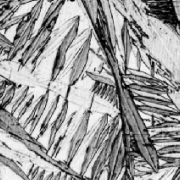

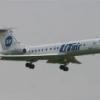

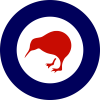
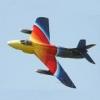
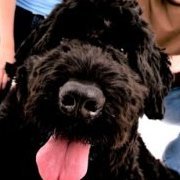


-01_compress20.thumb.jpg.876237f478e7de3cb420ca2f41976d87.jpg)
